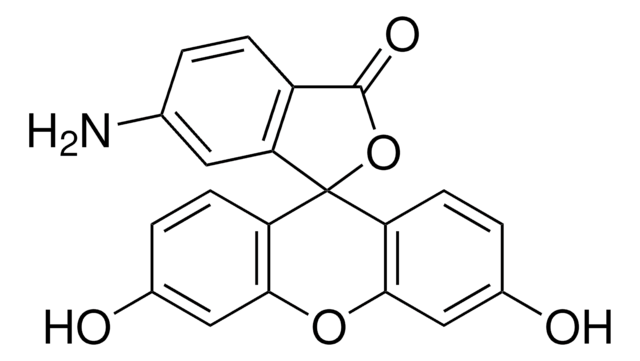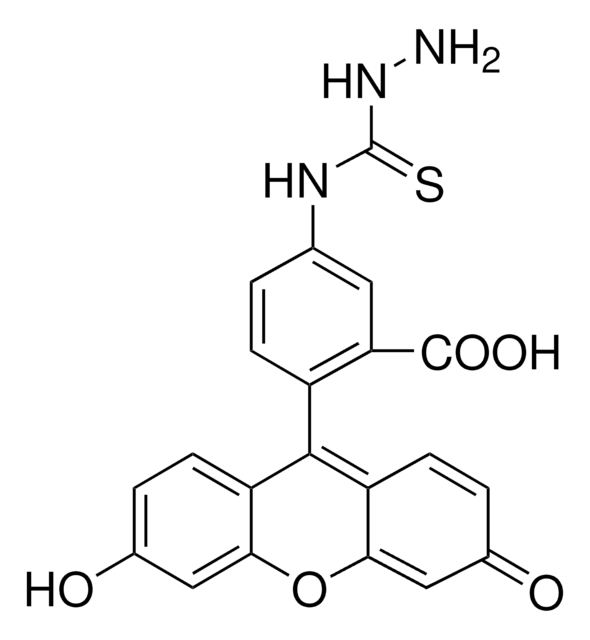07985
6-Aminofluorescein
BioReagent, suitable for fluorescence, ~95% (HPLC)
Sinonimo/i:
Fluoresceinamine isomer II
About This Item
Prodotti consigliati
Nome Commerciale
BioReagent
Livello qualitativo
Saggio
~95% (HPLC)
Stato
powder
Impurezze
≤5% 5-aminofluorescein
Punto di fusione
285 °C (dec.) (lit.)
Solubilità
DMSO: soluble
acetone: soluble
methanol: soluble
Fluorescenza
λex 490 nm; λem 520 nm in 0.1 M Tris pH 9.0
Compatibilità
suitable for fluorescence
Stringa SMILE
Nc1ccc2C(=O)OC3(c4ccc(O)cc4Oc5cc(O)ccc35)c2c1
InChI
1S/C20H13NO5/c21-10-1-4-13-16(7-10)20(26-19(13)24)14-5-2-11(22)8-17(14)25-18-9-12(23)3-6-15(18)20/h1-9,22-23H,21H2
YOAWSYSKQHLFPM-UHFFFAOYSA-N
Cerchi prodotti simili? Visita Guida al confronto tra prodotti
Applicazioni
Altre note
Non trovi il prodotto giusto?
Prova il nostro Motore di ricerca dei prodotti.
Codice della classe di stoccaggio
11 - Combustible Solids
Classe di pericolosità dell'acqua (WGK)
WGK 3
Punto d’infiammabilità (°F)
Not applicable
Punto d’infiammabilità (°C)
Not applicable
Dispositivi di protezione individuale
dust mask type N95 (US), Eyeshields, Gloves
Scegli una delle versioni più recenti:
Possiedi già questo prodotto?
I documenti relativi ai prodotti acquistati recentemente sono disponibili nell’Archivio dei documenti.
Articoli
Nitric oxide (NO) as a signal transporter in neurons, endothelial cells and in the immune system.
Il team dei nostri ricercatori vanta grande esperienza in tutte le aree della ricerca quali Life Science, scienza dei materiali, sintesi chimica, cromatografia, discipline analitiche, ecc..
Contatta l'Assistenza Tecnica.




![5-([4,6-Dichlorotriazin-2-yl]amino)fluorescein hydrochloride ≥90% (HPLC)](/deepweb/assets/sigmaaldrich/product/structures/271/656/5f185b68-9254-440f-8211-1f4fbe1fee16/640/5f185b68-9254-440f-8211-1f4fbe1fee16.png)


